安徽广德申报“火锅之乡”,川渝火锅表示不服?
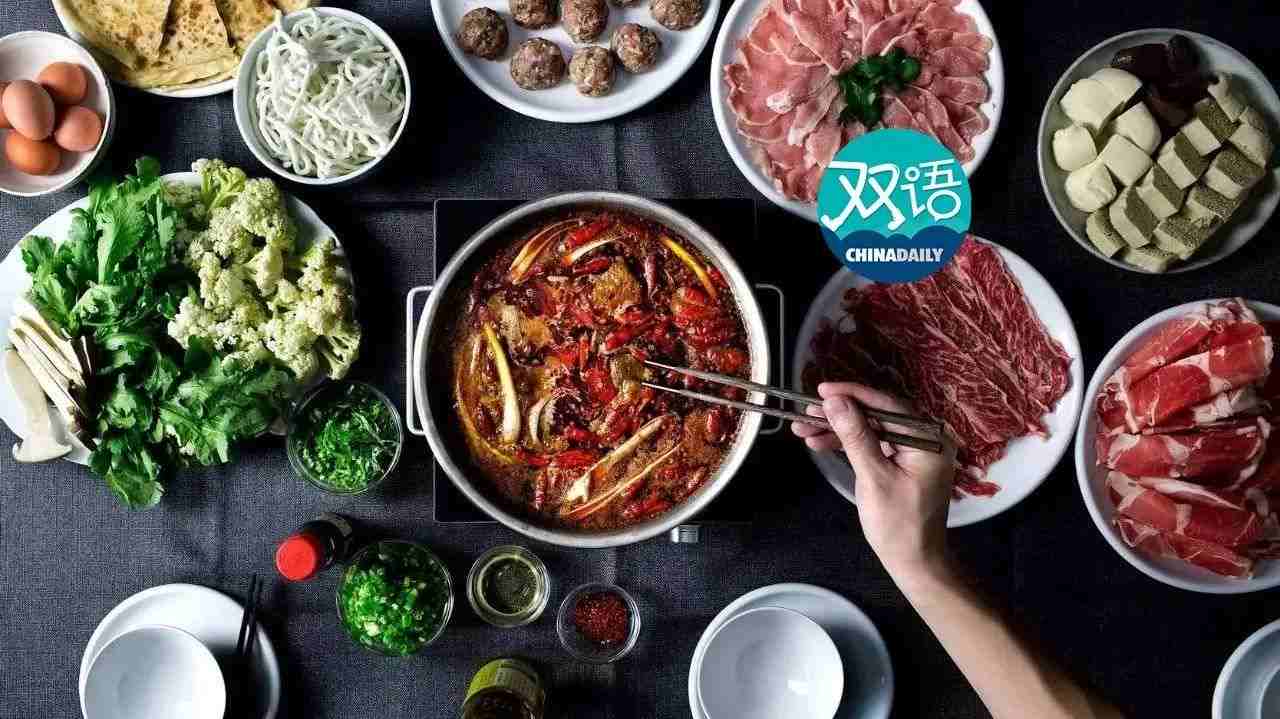
提起”火锅之乡“,你最先想起的是哪里?重庆?四川?北京?还是安徽?
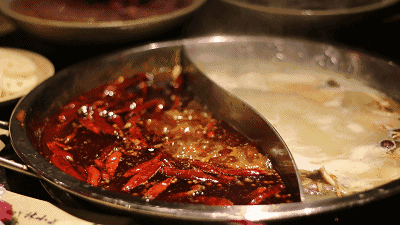
8月28日,安徽广德拟向中国烹饪协会申报“火锅之乡”,一时间网友评论是这样的:

所以,到底哪里才是真正的“火锅之乡”?中国各地的火锅到底什么样?
记者Simone McCarthy在《南华早报》上的一篇文章就探讨了此事:

什么是中国火锅?它从哪来?这些问题引起了全国性争论
文章写到“火锅之乡”争议的所在:
The decision by a town in southeastern China to declare itself the home of hotpot prompted a backlash from other parts of the country, which all have their own views on the correct way to make the dish.一个中国东南地区小城申报”火锅之乡“的决定引起了其他地区的反对,每个人都有自认为正确的火锅做法。With different parts of China all laying claim to the title of hotpot’s hometown, we look back at the history of the dish in all its different varieties。当中国不同地区都声称自己才是”火锅之乡“时,让我们从不同方面来回顾下火锅的历史。
究竟什么才是火锅?Simone写道,那要看你问的是谁了(It depends on who you ask)。但却有基本的一套烹饪的法子:
The basic formula is the same: a shared simmering, bubbling vat of broth in which the diners cook their meats, vegetables and other ingredients.火锅的基本构成是一样的:给用餐者烹饪肉、菜和其他食物的一个共用的、煮沸的锅底。
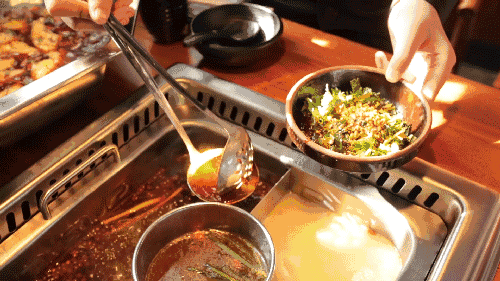
But like China’s spoken language or climate, hotpots vary widely across the country – from the spicy, numbing heat of Sichuan to the fragrant chrysanthemum tastes of Jiangsu.但是和中文或中国的气候一样,从麻辣的四川风味到菊花清香的江苏风味,中国的火锅在不同地区也大不相同。
麻辣味的四川风味火锅倒是常见,但是这“菊花清香”火锅倒是真没听说过诶!
想尝尝。

文章写道,提起北京火锅,那就是一个字,简单(all about simplicity),肉的话呢,也是以羊肉为主:
China’s capital is home to the Old Beijing-style hotpot, which inherited its central ingredient – mutton – from the northern nomadic tradition.中国首都北京是老北京式火锅的故乡。继承了北方游牧传统,羊肉成为了北京火锅的重要组成部分。In its traditional preparation, the thinly hand-sliced meat is cooked in a volcano-shaped copper pot. Meats and vegetables are added to light broth seasoned with fragrant mushroom, ginger, and scallions在传统的制备中,要将薄片手切羊肉放入火山状的铜锅中。在由香菇和葱姜调成的清汤中放入肉和蔬菜。
但就像北京人之间的交往一样,在这简单之中,却处处透着讲究。就连食材放入锅中的顺序,都有着说道:
The final ingredients to be cooked in the pot are simple: stomach meat, sliced lamb, tofu, green vegetables and thin noodles.锅中的食材很简单:肚(dǔ)、羊肉片、豆腐、青菜和细面条。Purists will insist that the ingredients must be added in that precise order.讲究的人会坚持把以上食材按照这种精确的顺序涮入锅中。
天气渐渐凉了,一桌铜锅涮肉想想就很治愈呢。
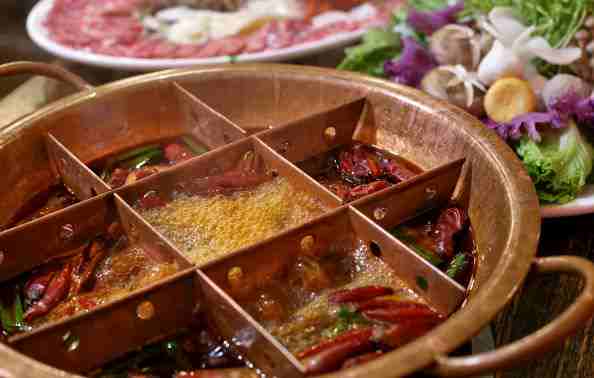
经常有人把“川渝”火锅放在一起,作者也表示,虽然这两者是有细微差别的,但是它们都有一个特点,就是“麻辣”。
Though they have subtle differences, both Sichuan’s capital Chengdu and the neighbouring municipality of Chongqing rely on peppercorns to give it a mouth-numbing spicy flavour.虽然四川成都和隔壁的重庆在火锅烹饪方法上有细微的差别,他们都通过花椒给人带来一种麻辣的口感。
而这种麻辣口味则和其地理条件有关:
He Qiao, a Chengdu chef, said the city was hot in the summer and cold in the winter. He believes that Sichuan peppercorns and chilis “can disperse both the humidity and cold inside our bodies, which helps keep the balance between yin and yang”成都厨师何乔(音)说,因为这里的气候夏热冬冷,四川花椒和辣椒可以将潮湿和寒意从身体中驱除,使人达到阴阳平衡。
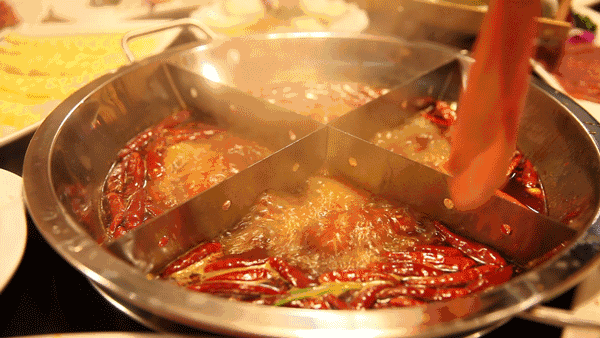
四川的火锅文化也十分浓厚,食材也丰富。这大概也是不少人提到四川就想到火锅的原因。
Unlike in Beijing, there is a much wider choice of ingredients for diners to choose from – basically, anything goes from congealed blood to live shrimp.不同于北京,这里有更多选择,从血豆腐到活虾都可以成为被挑选的食材。Hotpot culture is strong in this part of the world. Chongqing residents often claim that one in five restaurants there is a hotpot place.在这个地方,火锅文化十分浓厚。重庆人经常说五个餐馆里就有一个火锅店。
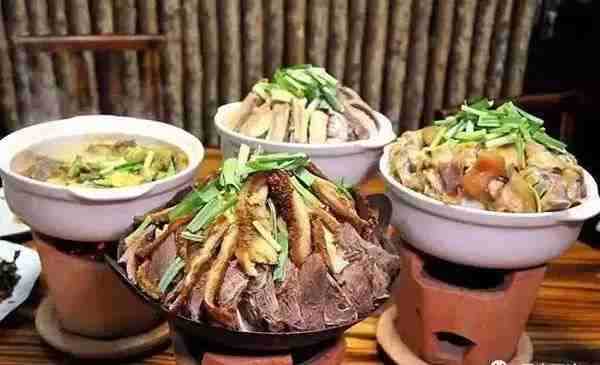
Guangde in the southeastern province of Anhui kicked off the latest controversy by unilaterally declaring itself the hotpot hometown,安徽东南地区的广德县便是近期单方面申报自己为火锅之乡,引起争议的地方。
相比四川火锅和北京铜锅,安徽的火锅可能在知名度上并没那么高,但它却也有自己的风味特色:
However, this variety is less well known compared with Beijing and Sichuan’s versions and features a heavily flavoured broth with local, seasonable vegetables.但是,相比于北京火锅和四川火锅,这种火锅鲜为人知。它的特点是有浓郁的高汤和当地的时令蔬菜。“The simplest pot is pork stewed with radish. It’s simple, but incredibly delicious, especially in winter,” said Mian Lugui, a university student from Guangde.“最简单的火锅做法是萝卜煨猪肉,这很简单,但是非常好吃, 尤其是在冬天。”一位广德的大学生丏璐桂(音)说。

除了上面几种,这位作者还列出了中国各地的火锅,云南、贵州、江苏、广东……各有不同。
Yunnan in the southwest often uses ham, Guizhou in the south is known for flavours such as its sour hotpot and its use of ingredients such as cow intestine.西南地区的云南经常用火腿,而南部的贵州则热衷酸味的火锅,经常用牛肠等食材。
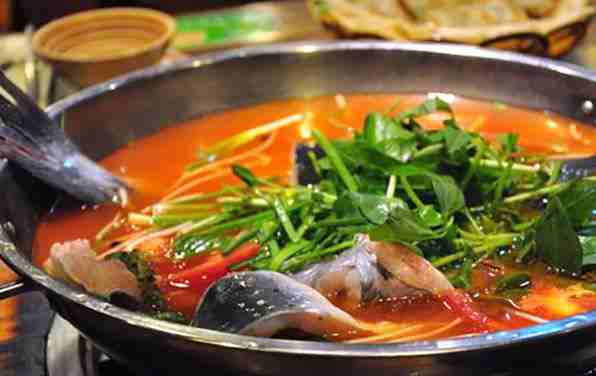
贵州的酸汤鱼
而江苏的火锅则是蛮清淡的:
In Jiansgu on the east coast hotpots have a lighter flavour and are cooked with chrysanthemum.在东部的江苏,火锅的口味都很清淡,锅底加了菊花。
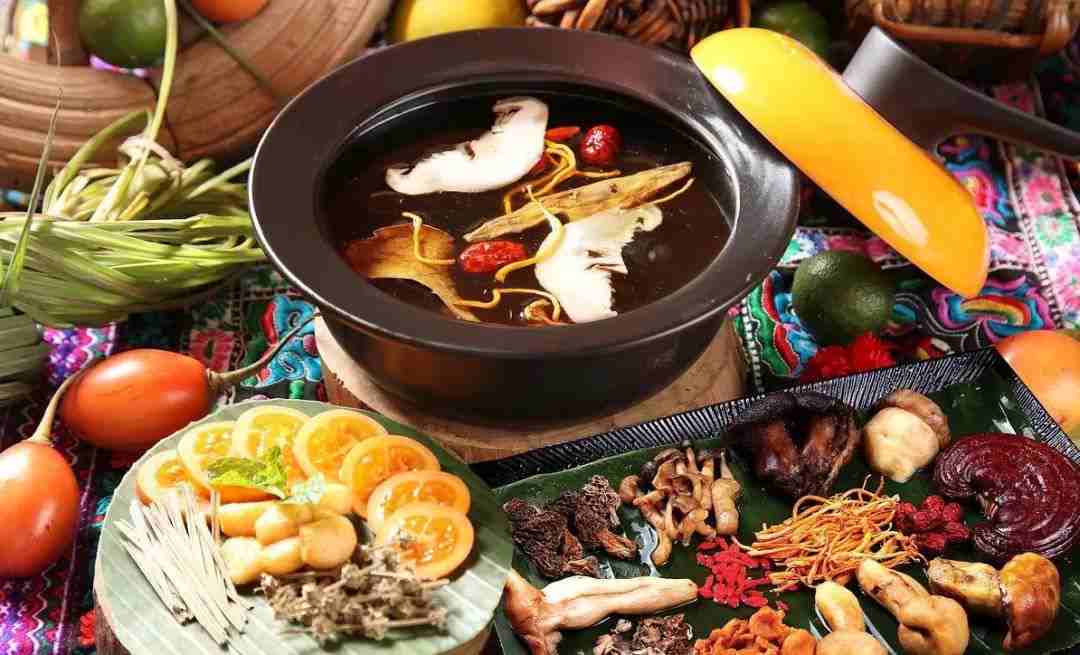
云南主要食材为菌菇的火锅
在吃上从来都“敢为人先”的广东人,在火锅上自然也蛮讲究新鲜的。
The southern province of Guangdong, home to Cantonese cuisine, is known for its fragrant soup base and its emphasis on seafood.中国南部的粤菜之乡广东,以香味浓郁的汤底和海鲜食材闻名。
“Because the climate in Guangdong is relatively hot, people do not eat chilli. So the local hotpot is not spicy and they use spring onion, ginger, peanut oil and soy sauce instead,” said Zhou Chao of Beijing Cooking School.”因为广东天气炎热,所以广东人不吃辣。因此广东火锅是不辣的,配料一般是小葱、花生油和酱油。“北京烹饪学校的周超(音)说。
关于火锅的历史,也有不同的说法,一种说法是,火锅最早可以追溯到三国时期:
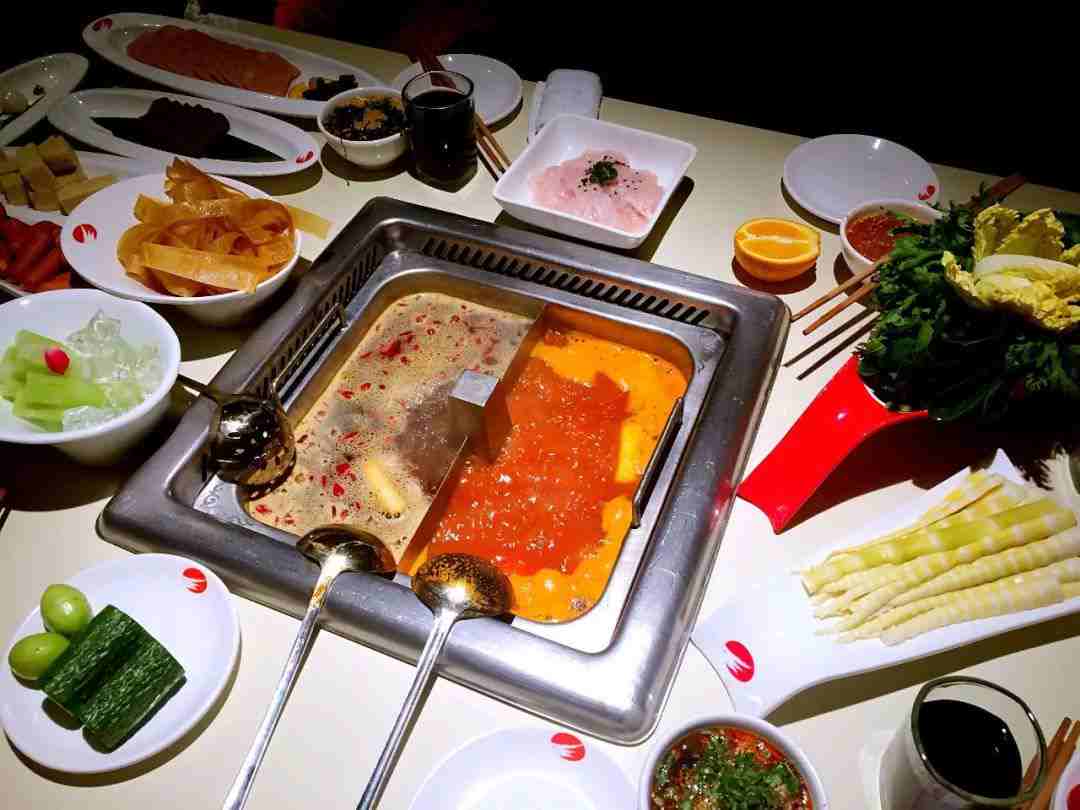
“At first, it was popular in the cold north of China, and people used it to cook all kinds of meat. Further developments in cooking technology led to the development of more variations of hotpot.”“一开始,火锅在中国寒冷的北方流行,人们用火锅来烹饪各种肉类。随着烹饪技术的进步,各式各样的火锅出现了。”
而另一种说法,则认为火锅最早可以追溯到蒙古帝国时期:
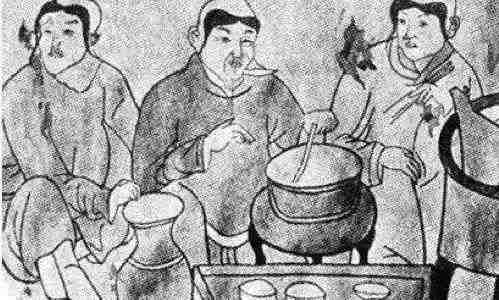
But others believe that the dish as we know it today probably has its roots in the 14th century. Some accounts trace the roots of Beijing hotpot to the days of the Mongol empire around 800 years ago.另一种说法认为我们今天看到的火锅可能起源于14世纪。一些记载显示,北京火锅可以溯源到800年前的蒙古帝国时期。A legend from that time tells of a emperor impatiently waiting for his lamb leg to cook as he prepared for battle. His ingenious chef decided to speed up the process by chopping up the meat and boiling it, thereby giving rise to a new dish.一个蒙古帝国时期的传说中提到一位皇帝因为准备打仗,很不耐烦地等羊腿做好。他聪明的厨师决定加快做羊腿肉的速度,于是将肉切完后直接煮熟,因此发明了一种新的烹饪方法。

在上世纪30年代,重庆开了第一家火锅店,而今,火锅店已经开遍全世界:
The first restaurant known to have served the dish appeared as late as the 1930s. Fittingly enough it opened in Chongqing, whose own variety of the dish is now flourishing across the globe.已知的第一家火锅店出现于20世纪30年代,在再恰当不过的重庆开业。现在,不同种类的重庆火锅已在全世界蓬勃发展。
如今,中国的火锅餐厅已经将连锁店开到了世界各地。
不少外国人也感受到了中国火锅的美味和中国饮食文化的魅力。
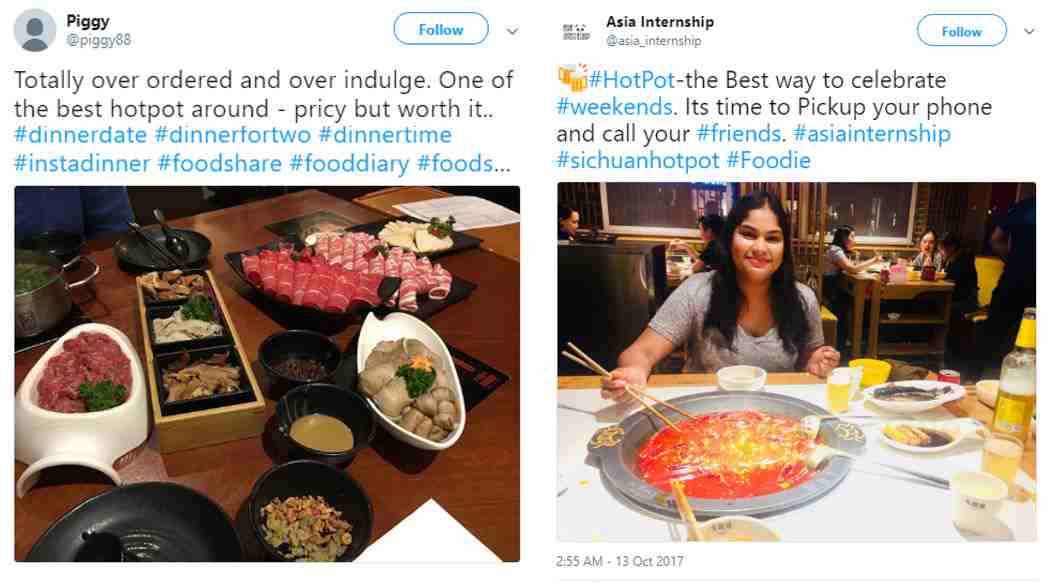
好了,讲了这么多的火锅,哪种才是你的爱呢?
编辑:李雪晴
实习生:薛宇航
推 荐 阅 读
中国日报双语新闻

↑长按关注中国最大的双语资讯公众号↑
最新评论
推荐文章
作者最新文章
你可能感兴趣的文章
Copyright Disclaimer: The copyright of contents (including texts, images, videos and audios) posted above belong to the User who shared or the third-party website which the User shared from. If you found your copyright have been infringed, please send a DMCA takedown notice to [email protected]. For more detail of the source, please click on the button "Read Original Post" below. For other communications, please send to [email protected].
版权声明:以上内容为用户推荐收藏至CareerEngine平台,其内容(含文字、图片、视频、音频等)及知识版权均属用户或用户转发自的第三方网站,如涉嫌侵权,请通知[email protected]进行信息删除。如需查看信息来源,请点击“查看原文”。如需洽谈其它事宜,请联系[email protected]。
版权声明:以上内容为用户推荐收藏至CareerEngine平台,其内容(含文字、图片、视频、音频等)及知识版权均属用户或用户转发自的第三方网站,如涉嫌侵权,请通知[email protected]进行信息删除。如需查看信息来源,请点击“查看原文”。如需洽谈其它事宜,请联系[email protected]。




